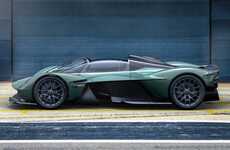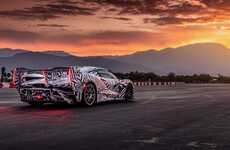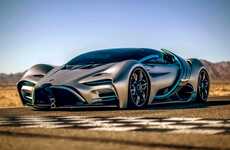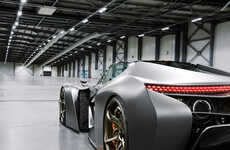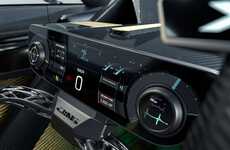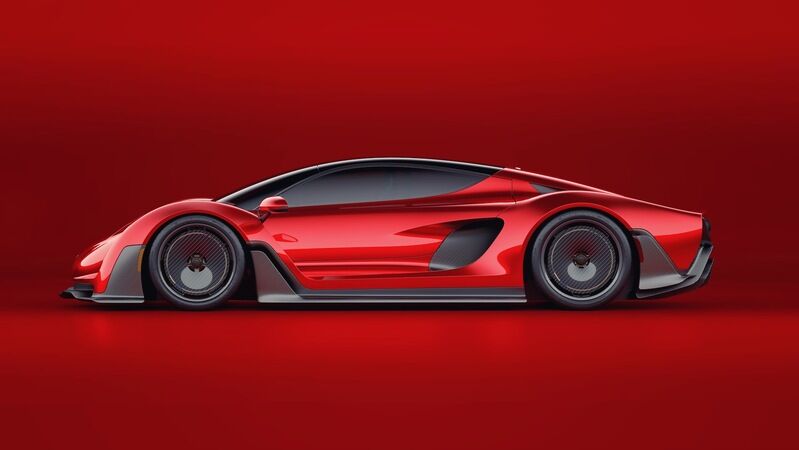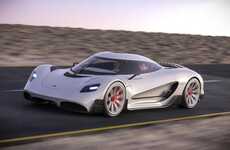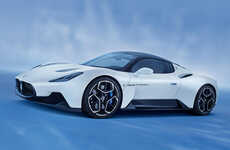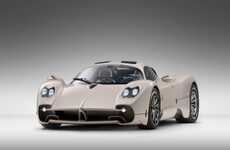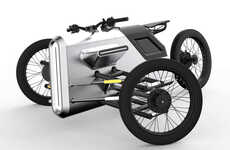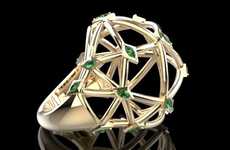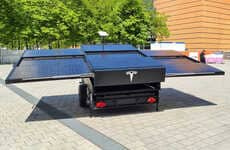
Czinger Announced the 'V Max' Version of its 21C Supercar
Colin Smith — August 24, 2022 — Autos
References: czinger & motorauthority
Czinger, the automaker most known for its customizable '21C' supercar, recently announced a bespoke body trim for this car titled the '21C V Max.' The V Max pushes the Czinger more toward hypercar than supercar with a modified frame and components specifically optimized for speed and power output. The 21C V Max features a fighter-jet-inspired cabin with an elongated, lowered frame with enhanced aerodynamics, effectively increasing traction while lowering wind resistance.
The powertrain and drivetrain of the 21C are unchanged, but the frame modifications resulted in a 0-62mph of 1.9 seconds and a maximum speed of roughly 268 miles per hour. This is significantly more powerful than the regular 21C. However, this power comes at a cost, as the 21C V Max retails for $1.7 million USD and reportedly takes over 3,000 hours to 3D-print each model.
Image Credit: Czinger
The powertrain and drivetrain of the 21C are unchanged, but the frame modifications resulted in a 0-62mph of 1.9 seconds and a maximum speed of roughly 268 miles per hour. This is significantly more powerful than the regular 21C. However, this power comes at a cost, as the 21C V Max retails for $1.7 million USD and reportedly takes over 3,000 hours to 3D-print each model.
Image Credit: Czinger
Trend Themes
1. Customizable Hypercars - Manufacturers can capitalize on the growing demand for hypercars by offering customizable options, pushing the limits of high speed and performance.
2. Advanced 3D Printing - With the use of advanced 3D printing technology, manufacturers can explore new methods of producing complex lightweight parts, ultimately reducing production costs and increasing speed of output.
3. Streamlined Design - Incorporating streamlining and aerodynamics in design for high performance cars can create opportunities for increased speed and reduced wind resistance.
Industry Implications
1. Automotive - The auto industry has the potential to push the boundaries of customization and high-speed performance in hypercars, using cutting-edge technologies to produce complex and lightweight parts.
2. 3D Printing - The use of advanced 3D printing technology can lead to disruptive innovation in various industries by reducing production costs and time, and enabling the creation of complex and precise designs and parts.
3. Aerospace - By applying aerodynamics and lightweight design principles derived from the aerospace industry, manufacturers can push the boundaries of high-performance cars and achieve unprecedented speed and efficiency.
6.5
Score
Popularity
Activity
Freshness


